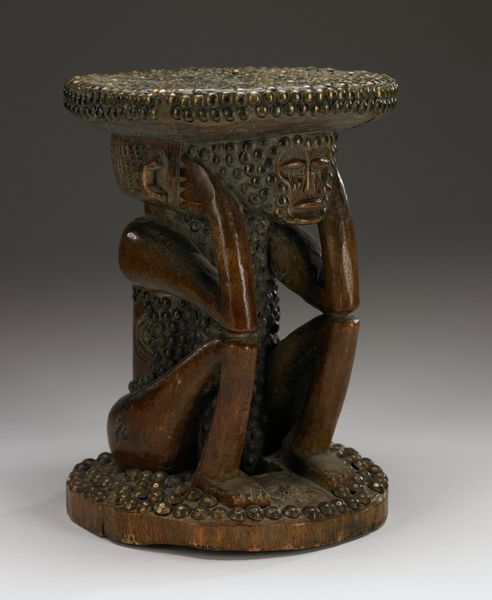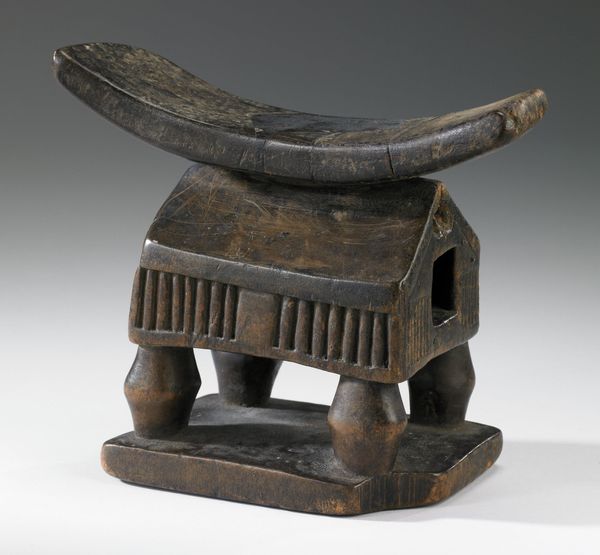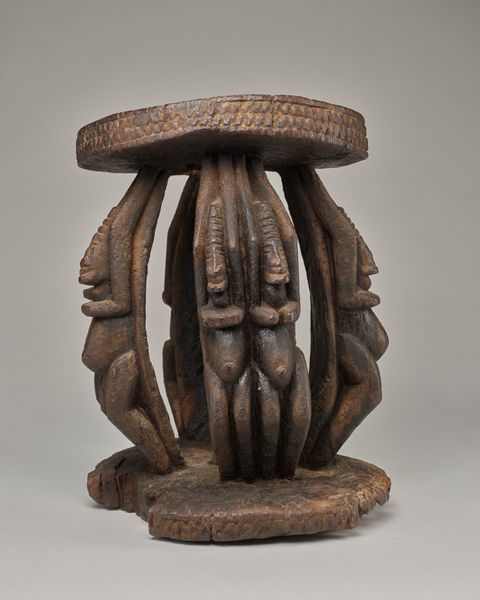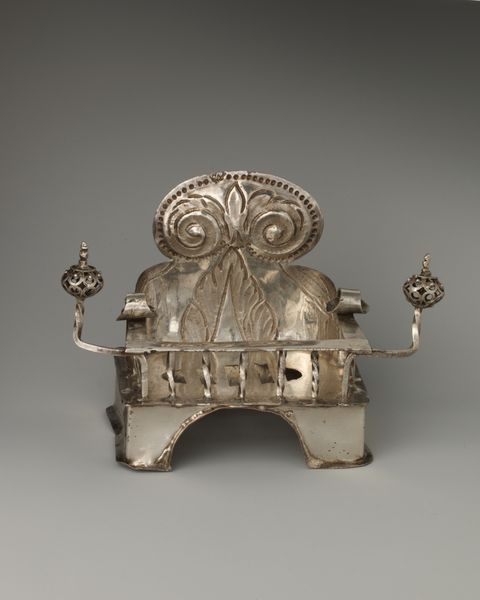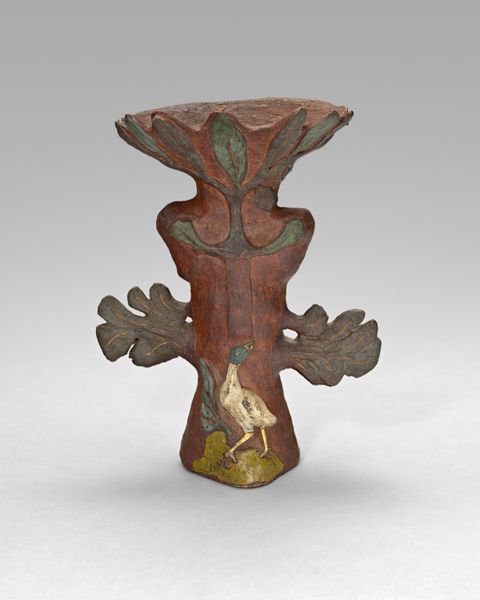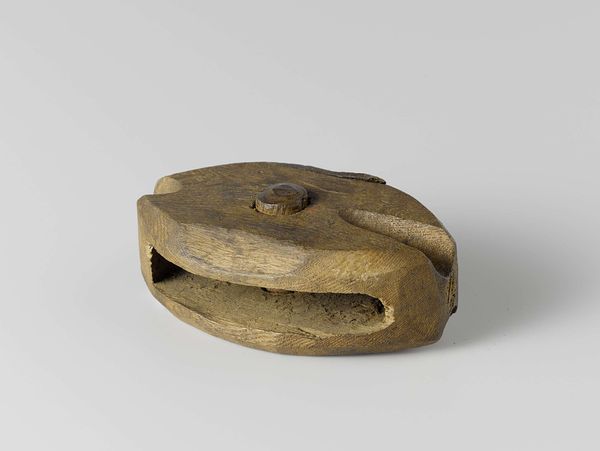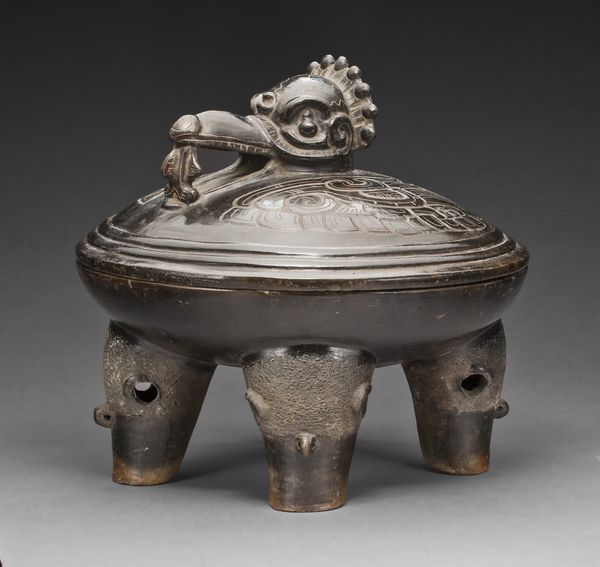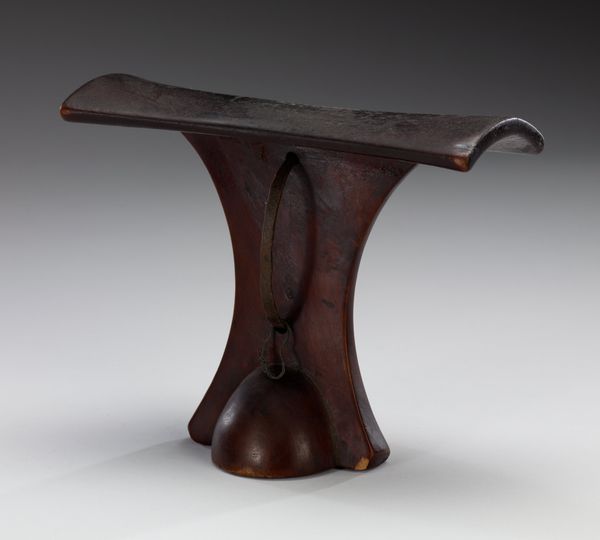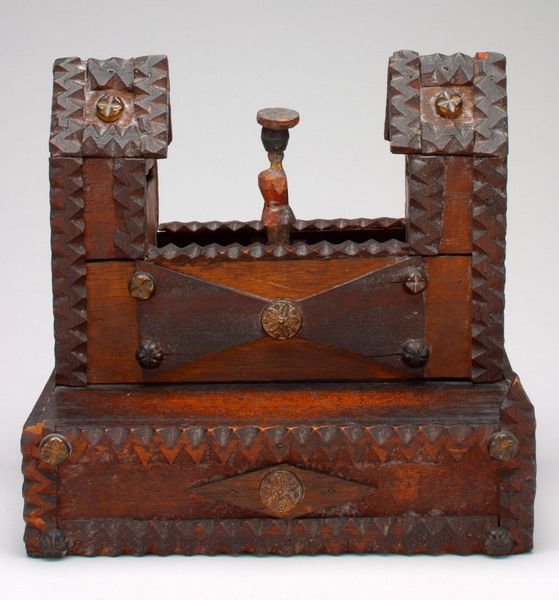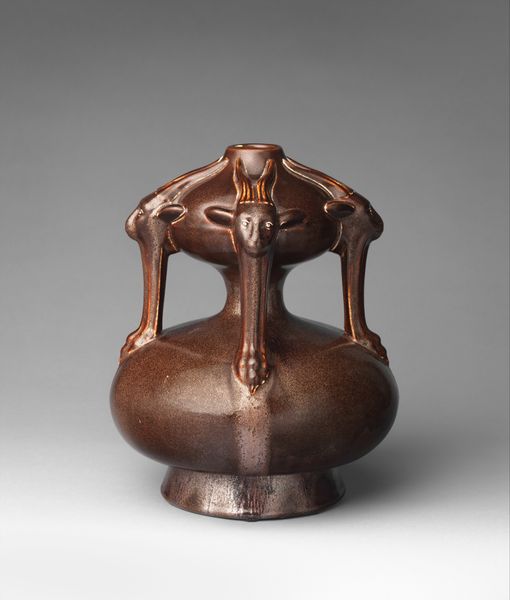
carving, sculpture, wood
#
carving
#
figuration
#
sculpture
#
wood
Dimensions: 5-11/16 x 8-1/8 x 7-13/16 in. (14.4 x 20.6 x 19.8 cm)
Copyright: Public Domain
Curator: Let’s turn our attention to this quite compelling Chokwe stool, likely crafted sometime in the 19th or 20th century. The primary medium is wood, exhibiting both carving and relief work, a striking combination of artistry and functionality. Editor: My immediate impression is how burdened those figures appear. It’s incredibly tactile; I can almost feel the weight pressing down on them. You can clearly discern the marks left behind by the carving tools, underscoring the human effort involved. Curator: Exactly. The figuration here, those repeated seated figures, are significant. They resonate with ideas of support, community, and perhaps ancestral connection, each figure acting as a bearer. They literally shoulder the burden of the seat. Editor: I wonder about the process of acquiring the wood. Was it locally sourced? How was it seasoned? Considering the repetitive forms, was this perhaps a collaborative effort or did a single carver execute it? These considerations are key to grasping the cultural and economic value assigned to it. The meticulous rows of decorative tacks suggest careful planning and execution, indicative of skill and perhaps even a ritualistic creation. Curator: And consider the circles of studs that border the top and bottom, contrasting the smoothness of the figurative carvings. The circle itself, a potent symbol across numerous cultures. It suggests completion, continuity, the cyclical nature of life. Their presence lends the stool not just utility, but also spiritual significance. Editor: I think what fascinates me is the convergence of craft and daily life. This isn’t some purely decorative object. It's functional. So the choice of material, the repetitive, almost industrial application of studs, it all contributes to a narrative that intertwines status, labor and even trade. Curator: Indeed, a remarkable piece. I'm struck by how an object so grounded in the everyday, like a simple stool, can carry such weighty cultural symbolism. Editor: And for me, its the material testament of a community, each gouge, each carefully placed tack is a piece of labor crystallized in an object of utility and perhaps quiet dignity.
Comments
minneapolisinstituteofart about 2 years ago
⋮
Many African cultures, including the Chokwe, believe death is not an end, but merely a transition to the spirit world. Departed ancestors continue to play an active role in the life of the living, providing protection and guidance. The living try to ensure the good favor of their ancestors by respecting traditions and providing offerings of food and drink. The figure in these Chokwe stools is an ancestor holding her head in sorrow. She is worried that her descendents are not honoring her as they should and fears that they may be punished for their misdeeds.The brass tacks embellishing these stools signify that they were once owned by a king. The figure of the female ancestor carved in the stool symbolically supports the king, protecting his authority. Immense spiritual strength is accredited to women in African society and female figures are common in their art. This power comes from their ability to bear children, and thus ensure the continuance of their bloodline and culture.
Join the conversation
Join millions of artists and users on Artera today and experience the ultimate creative platform.
